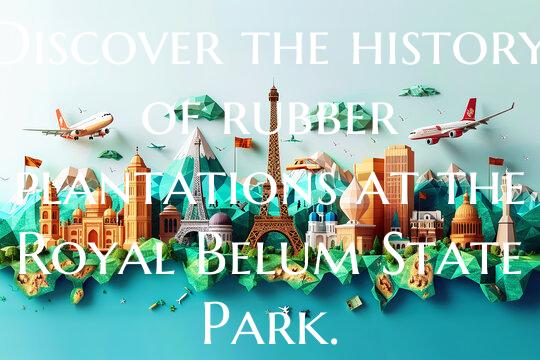
Located in the northern part of Peninsular Malaysia, the Royal Belum State Park is not only a haven for biodiversity and nature enthusiasts but also holds a significant historical value with its connection to rubber plantations.
Rubber plantations played a pivotal role in the economic development of Malaysia, particularly during the British colonial era. The lush rainforests of the Royal Belum State Park provided the perfect environment for cultivating rubber trees, leading to the establishment of plantations in the region.
The history of rubber plantations in Royal Belum dates back to the late 19th and early 20th centuries when British colonizers introduced rubber cultivation to the area. The fertile soil and tropical climate of the park supported the rapid growth of rubber trees, making it a lucrative industry for the British colonial masters.
Visitors to the Royal Belum State Park can still witness remnants of the old rubber plantations, including abandoned plantation houses, tapping sheds, and even some rubber trees that have stood the test of time. Walking through these remnants offers a glimpse into the past and the labor-intensive processes involved in rubber production.
Exploring the history of rubber plantations at the Royal Belum State Park is not only a journey back in time but also a reflection of Malaysia's rich heritage and economic evolution. It allows visitors to appreciate the legacy of rubber cultivation and its impact on the country's economy and development.
In addition to its historical significance, the Royal Belum State Park continues to be a vibrant ecosystem teeming with diverse flora and fauna, making it a must-visit destination for nature lovers and history enthusiasts alike. By delving into the history of rubber plantations at the park, visitors can gain a deeper appreciation for the interconnectedness of nature, history, and culture in this enchanting destination.